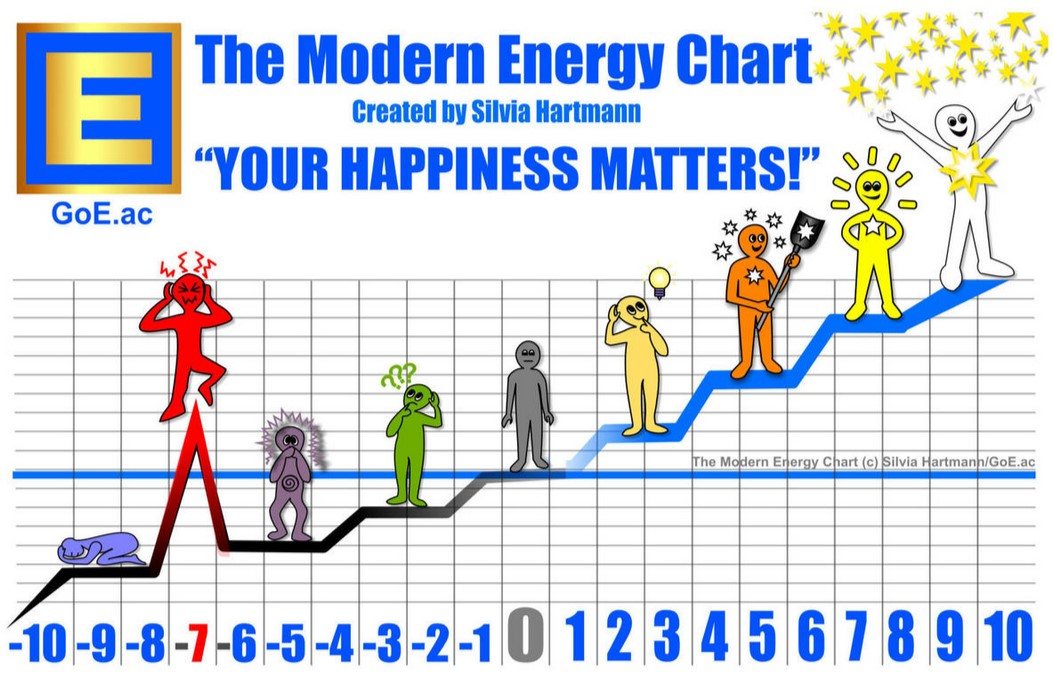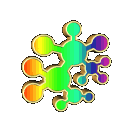The Modern Energy Chart and SUE Scale: Foundational Instruments of Third Field Science
Abstract
The Modern Energy Chart (MEC) and Subjective Units of Experience (SUE) Scale are introduced as inaugural tools of Third Field science, a nascent discipline integrating human energy systems with subjective experience. Developed by Silvia Hartmann over three decades, from the 1993 Harmony Program to their formalization in 2009 and 2014, the MEC and SUE Scale map energy states from critical depletion (-9) to peak vitality (+10). Applied in thousands of workshops, trainings, and client sessions worldwide since 2011, they demonstrate efficacy in enhancing emotional well-being across diverse contexts. The MEC describes observable energy states (emotional states), while the SUE Scale quantifies subjective states, together establishing a pioneering framework for energy-based research and practice. This article traces their development, details their operational states, and evaluates their transformative potential in Third Field science, concluding with a self-help exercise for experiential validation.
Introduction
Third Field science emerges as a paradigm to bridge the material and energetic dimensions of human experience, positing the "energy body" as a dynamic system modulating emotion, physical performance, cognition, and behavior. From its inception, this field is defined by the Modern Energy Chart (MEC) and Subjective Units of Experience (SUE) Scale, developed by Silvia Hartmann through a 30-year trajectory of energy system-focused inquiry. These tools—formalized in 2014 and 2009, respectively—offer a foundational framework for investigating and enhancing energy flow, positioning them as the bedrock of Third Field exploration.
The MEC maps energy states from -10 (cessation) to +10 (Star States), while the SUE Scale provides a corresponding metric for subjective experience. Since 2011, their application in thousands of global settings—individual, therapeutic, educational, and organizational—has evidenced their practical impact on emotional well-being. This paper chronicles the developmental history of the MEC and SUE Scale, defines their energy states, and assesses their role as cornerstone instruments in Third Field science, culminating in a practical exercise to engage readers directly with these tools.
Developmental History
1993–2002: Foundations
Hartmann’s work began with the Harmony Program (1993), linking energy deficits to negative behavioral escalation in animals and uncovering a positive continuum beyond stress relief. The Emotional Intensity (EI) Scale (2000) extended this to human relationships, allowing the user to map conflicting emotions. EMO Energy In Motion (2002) introduced the "Energized End State" (EES), later placed at +10, laying the groundwork for the MEC and SUE Scale.
2009–2014: Formalization
The SUE Scale (Subjective Units of Experience 2009) replaced SUDS Scale (Subjective Units Of Distress), integrating positive emotions (-10 to +10). Adopted by The GoE in 2011, it became a standard in energy work. The MEC visualized these states, translating the Harmony Program’s insights into a universal tool for stress management, self-help and therapy, solidifying their place in Third Field science and re-setting the goal of energy body interventions from feeling nothing (no pain, ZERO) to experiencing a significant threshold shift (the Energized End State EES, +10).
2019–Present: Evolution
The MEC and SUE Scale have propelled the Modern Energy rEvolution, emphasizing the critical importance of the "Star States" (+10 experiences) via Star Matrix and Star Therapy, advancing consciousness research and energy healing within the Third Field framework.
Theoretical Foundation
Third Field science posits a triadic system model: a material body, a hitherto undefined "mind" and an energy body, the latter governing states through flow dynamics. The MEC and SUE Scale operationalize this by mapping a spectrum:
- -9 to -8: Extremely Low Energy States – Critical depletion, marked by withdrawal and severe depression, nearing collapse at -9, with -10 as death.
- -7: Emergency State – A survival surge (e.g., rage), risking post-collapse damage, akin to "Rage Syndrome."
- -5: Fear – High stress destabilizes the energy body, impairing reason and function.
- -3: Stress – Chronic uncertainty, detrimental despite being mislabeled "good stress."
- 0: Zero Point – A neutral void, offering no vitality, rejected as a goal.
- +3: Awakening – Initial energy gains spark creativity, though insufficient for action.
- +5: Inspired Action – Sufficient energy enables consistent physical and mental effort.
- +7: Success – High energy fosters achievement and leadership.
- +10: Freedom – A transformative threshold of optimal flow, yielding "Star Events."
This continuum, rooted in Hartmann’s research, establishes the MEC and SUE Scale as the lens through which Third Field science views energy as a determinant of human functioning and performance.
Methods
Modern Energy Chart (MEC)(Objective)

The MEC visualizes energy states from -10 to +10, with intensity on a vertical axis and qualitative shifts horizontally. The chart shows simplified human representations in different energy states (emotional states) as a means of universal information transmission. Its universal accessibility drives its use in Third Field applications and sets the framework for objective assessments of energy states.
Subjective Units of Experience (SUE) Scale

The SUE Scale (-10 to +10) quantifies subjective states via self-report, tracking shifts during interventions. With continued use, the SUE Scale and the Modern Energy Chart become one and the same.
Integration in Third Field Science
The MEC and SUE Scale form a feedback loop: SUE scores populate the MEC, interventions target states, and post-treatment scores refine the chart. Applied globally, this synergy defines Third Field methodology.
Discussion
The MEC and SUE Scale anchor Third Field science with a detailed energy taxonomy. Negative states (-9 to -3) elucidate collapse and stress, while the positive wing (+3 to +10) reframes vitality as the goal, with +10 democratizing peak experiences. Their application since 2011—e.g., shifting -5 fear to +5 action—mirrors foundational insights, suggesting neuroenergetic correlates.
Challenges include validating the energy body empirically and studying state transitions. Yet, their role in targeting +10 states via Star Therapy marks them as transformative, with applications beyond Third Field domains like therapy and education.
Conclusion
The MEC and SUE Scale, evolved from 1993 to today, are the foundational instruments of Third Field science. Proven in tens of thousands of global contexts, they redefine emotional well-being as an ongoing dynamic process. They invite rigorous study and interdisciplinary expansion, setting the goal towards transformative Star Events.
Practical Exploration: Self-Help Validation Exercise

To engage with the MEC and SUE Scale—core to Third Field science—try this optional exercise:
- Assess Baseline State: Reflect on a current emotion. Using the SUE Scale (-10 to +10), assign a score.
- Energy Intervention: Spend 3 minutes talking out aloud about something you love, i.e. answer the question, "Tell me about something you love."
- Reassess State: Re-rate your SUE score. Did you shift (e.g., -3 to +3)? Note changes in your physical body.
- Reflect: What does this tell us about our ability to change state at will?
This exercise tests the tools’ utility, echoing their Third Field application.
References
Hartmann, S. (1993). *The Harmony Program*. DH Publications.
Hartmann, S. (2000). The EI scale. *AMT Journal, 1*(2), 10–15.
Hartmann, S. (2002). The SUE scale. *AMT Journal, 3*(1), 5–12.
Hartmann, S. (2008). *Events psychology*. DragonRising.
Wolpe, J. (1969). *The practice of behavior therapy*. Pergamon Press.
Cite this article:
Hartmann, S. (2025). The Modern Energy Chart and SUE Scale: Foundational Instruments of Third Field Science. https://doi.org/10.5281/zenodo.15011012
|




